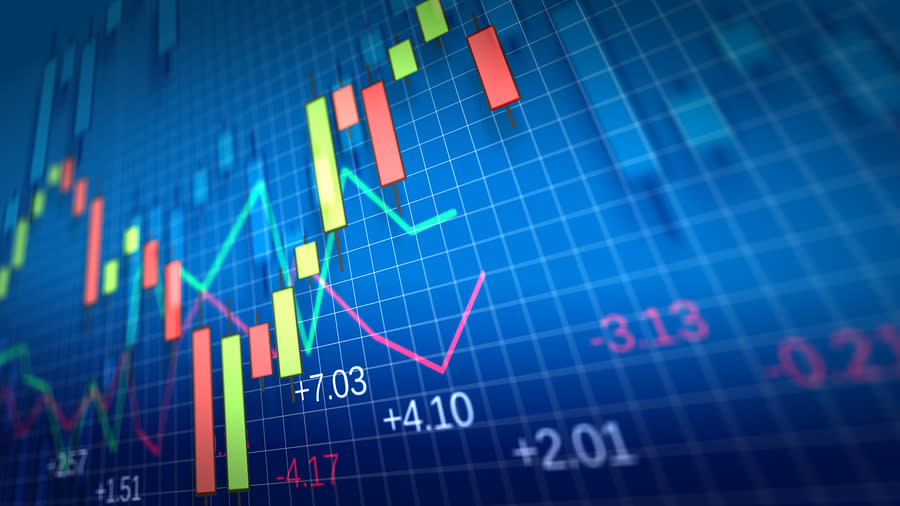Improve Your Retirement Income with These 3 Top-Ranked Dividend Stocks

Believe it or not, seniors fear running out of cash more than they fear dying.
Also, retirees who have constructed a nest egg have valid justifications to be concerned, since the traditional ways to plan for retirement may mean income can no longer cover expenses. Some retirees are now tapping their principal to make a decent living, pressed for time between decreasing investment balances and longer life expectancies.
Retirement investing approaches of the past don't work today.
For many years, bonds or other fixed-income assets could produce the yield needed to provide solid income for retirement needs. However, these yields have dwindled over time: 10-year Treasury bond rates in the late 1990s were around 6.50%, but today, that rate is a thing of the past, with a slim likelihood of rates making a comeback in the foreseeable future.
The impact of this rate decline is sizable: over 20 years, the difference in yield for a $1 million investment in 10-year Treasuries is more than $1 million.
Today's retirees are getting hit hard by reduced bond yields - and the Social Security picture isn't too rosy either. Right now and for the near future, Social Security benefits are still being paid, but it has been estimated that the Social Security funds will be depleted as soon as 2035.
Unfortunately, it looks like the two traditional sources of retirement income - bonds and Social Security - may not be able to adequately meet the needs of present and future retirees. But what if there was another option that could provide a steady, reliable source of income in retirement?
Invest in Dividend Stocks
Dividend-paying stocks from low-risk, high-quality companies are a smart way to generate steady and reliable attractive income streams to replace low risk, low yielding Treasury and bond options.
Look for stocks that have paid steady, increasing dividends for years (or decades), and have not cut their dividends even during recessions.
One way to identify suitable candidates is to look for stocks with an average dividend yield of 3%, and positive average annual dividend growth. Many stocks increase dividends over time, helping to offset the effects of inflation.
Here are three dividend-paying stocks retirees should consider for their nest egg portfolio.
Brixmor Property (BRX) is currently shelling out a dividend of $0.27 per share, with a dividend yield of 4.84%. This compares to the REIT and Equity Trust - Retail industry's yield of 4.45% and the S&P 500's yield of 1.57%. The company's annualized dividend growth in the past year was 4.81%. Check Brixmor Property dividend history here>>>
Urban Edge Properties (UE) is paying out a dividend of $0.17 per share at the moment, with a dividend yield of 3.78% compared to the REIT and Equity Trust - Retail industry's yield of 4.45% and the S&P 500's yield. The annualized dividend growth of the company was 6.25% over the past year. Check Urban Edge Properties dividend history here>>>
Currently paying a dividend of $0.38 per share, UGI (UGI) has a dividend yield of 6.67%. This is compared to the Utility - Gas Distribution industry's yield of 3.6% and the S&P 500's current yield. Annualized dividend growth for the company in the past year was 4.17%. Check UGI dividend history here>>>
But aren't stocks generally more risky than bonds?
It is true that stocks, as an asset class, carry more risk than bonds, but high-quality dividend stocks not only have the ability to produce income growth over time but more importantly, can also reduce your overall portfolio volatility relative to the broader stock market.
Combating the impact of inflation is one advantage of owning these dividend-paying stocks. Here's why: many of these stable, high-quality companies increase their dividends over time, which translates to rising dividend income that offsets the effects of inflation.
Thinking about dividend-focused mutual funds or ETFs? Watch out for fees.
If you prefer investing in funds or ETFs compared to individual stocks, you can still pursue a dividend income strategy. However, it's important to know the fees charged by each fund or ETF, which can ultimately reduce your dividend income, working against your strategy. Do your homework and make sure you know the fees charged by any fund before you invest.
Bottom Line
Seeking steady, consistent income through dividends can be a smart option for financial security in retirement, whether you invest in mutual funds, ETFs, or in dividend-paying stocks.
Want the latest recommendations from Zacks Investment Research? Today, you can download 7 Best Stocks for the Next 30 Days. Click to get this free report
Brixmor Property Group Inc. (BRX) : Free Stock Analysis Report
UGI Corporation (UGI) : Free Stock Analysis Report
Urban Edge Properties (UE) : Free Stock Analysis Report

 Yahoo Finance
Yahoo Finance 